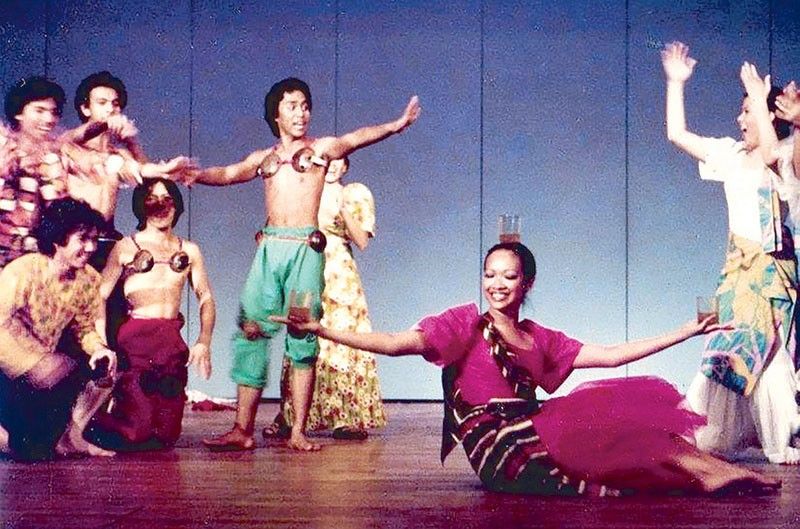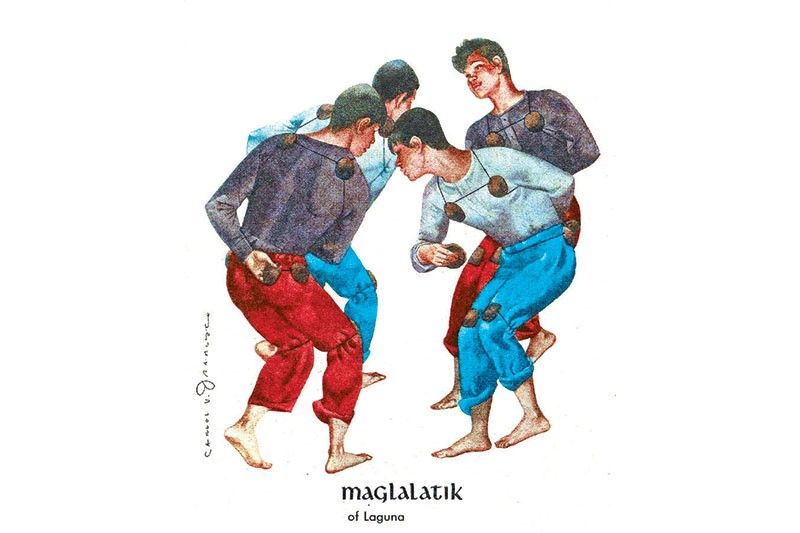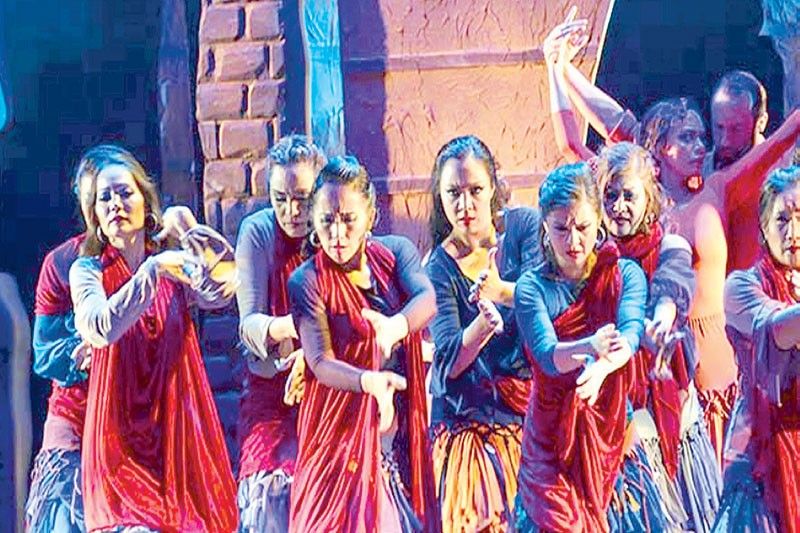Flamenco and coconut dancing


Riya, riya, pita! Riya, riya, pita! That’s a flamenco beat, a friend kept repeating as we rehearsed folk dances when I was younger and in that world. More on that later. First, our article for this week.
The pandemic has given me opportunities to clean out my collection of Philippine periodicals from the 1930s to the 1960s. The half-century-old local magazines had been gathering dust in piles in my basement. I love the weekly ones published by the local newspapers of the era because they were the internet of the time and offered a glimpse of the wider world to enjoy our weekends with.

I found two articles of interest last week while rummaging through these portals of the past. Both involve dancing, an interest I pursued in my late teens and early twenties while at university (and a little beyond). The first images are from a 1959 feature on flamenco, while the other was actually an advertisement for an appliance manufacturer that highlighted a local dance called the maglalatik.
When I was kid, I wanted to be a flamenco dancer. I thought that the male dancers looked pretty cool in their high-waisted trousers and fancy ensembles. The staccato rhythm produced by the dancers using their hands and heels (riya, riya, pita!) was an additional attraction. Images from magazines fueled this interest, as well as snippets from old Hollywood reruns on black-and-white television back in the day. I was also interested in matadors, again because of their nifty getup, which was as close to a superhero’s costume as you can get. The dangers of getting gored by bulls put me off that aspiration, though.
I never pursued this interest in high school because of the lack of extracurricular opportunities at my convent school for boys, but getting into the University of the Philippines offered one avenue. There was social dancing as a P.E. option, but I focused on tennis for active sport. I had shifted my cultural interest to singing, especially after my piano teacher replaced the piano with voice lessons (she was probably frustrated with me at the keyboard). I wanted to audition for the famed Madrigal Singers but sadly my note-reading skills were not up to any standard.

By accident I chanced upon another audition, that for the UP Filipiniana Group, a folk dance and music ensemble led by famed choreographer Madam Corazon Iñigo. I auditioned and got in on sheer guts. I had never taken a dance lesson in my life. My strong voice also suited me well for ethnic chants and folk songs that accompanied our performances. I loved the mountain province and southern dances with their strong rhythms on the gongs, drums, bamboo poles and castanets.
The castanet dances, or jotas, were the closest thing I got to flamenco. These and the Maglalatik were closest to flamenco in their use of percussion to provide the basis for the dances.
A few of my dance mates at the time, Gary Alba and Cynthia Salang, had taken flamenco with Ruben Nieto and Rose Borromeo. I never got the opportunity to join them for flamenco, as I joined the UP Filipiniana on two tours of Europe in the late 1970s.
The image of interest from the magazines in my collection was “The Maglalatik” by Carlos “Botong” Francisco. A lot of noted painters earned their living providing illustrations for the advertising and editorial needs of magazines from the turn of the century to the 1950s. Unfortunately, photographic images replaced these works of art from the 1960s onwards.
The other magazine clipping is a piece on flamenco. The images are fascinating studio shots of Rene Nieto (I still have to place his relationship to Ruben) and a number of women flamenco dancers preparing for a presentation in Manila in the late 1950s. Spanish culture was still very strong in those days. Spanish-language periodicals were still in circulation until the 1950s, and the upper crust still spoke Spanish. I remember having to take 12 units of the language in the 1970s (down from 24 units in the 1960s, I understand).
The images show Nieto with his main partner, Milagros Paredes-Gonzalez, in various poses. Also featured were the Olondriz sisters, Maria del Puy and Maria Christina in costumes from Aragon.
The other performers were Mariles Garcia, Tessie Da Silva (probably a relation of the famed Manila architect Carlos Da Silva) and Carmen Perez. The group was to perform excerpts from Sombrero de Tres Picos, a ballet.
After my folk-dancing days with the UP troupe, I did still dance and do some minor corps work for the Manila Metropolis Ballet (under Tony Fabella and Eddie Elejar, who looked like he did dance flamenco), as well as eventually a short stint with Hotlegs, believe it or not. But eventually my day job called me in full time, and in any case, I was not as gifted on my toes as I was with pencil and drawing.
Tats Manahan, a classmate in ballet and former manager of Hotlegs, did get into flamenco in the 1990s and 2000s. She even served on the board of Fundacion Centro Flamenco, the flamenco school founded 20 years ago by Emma Estrada, which keeps the art form alive with classes and performances, the last of which was right before the pandemic, the flamenco ballet La Luna Roja (Philippine STAR’s Therese Jamora-Garceau performed in that presentation and wrote about it: https://www.philstar.com/lifestyle/arts-and-culture/2019/11/18/1969542/red-moon-rises-filipino-flamenco ).
Tats recalls that there was much interest in the dance form, with people like Dante Silverio (of Toyota fame) Aurora Sagaz, Emma Estrada, Jojo Ocampo (also a former Hotlegs dancer) and Tami Monsod (Winnie’s daughter) all involved in the art.
As Tats observed, my “duende,” or inner spirit, was more attuned for ethnic dances, rather than flamenco. Philippine dance is heavily influenced by Spanish culture, of course. It is sad, however, that government has de-emphasized art, culture and the humanities in the education of our young. Hopefully a new administration after May brings us back to the right path.
Maybe next year I’ll take up flamenco! Riya, riya pita! Riya, riya, pita!
* * *
For more information on flamenco, contact Fundacion Centro Flamenco via their FB page.



















